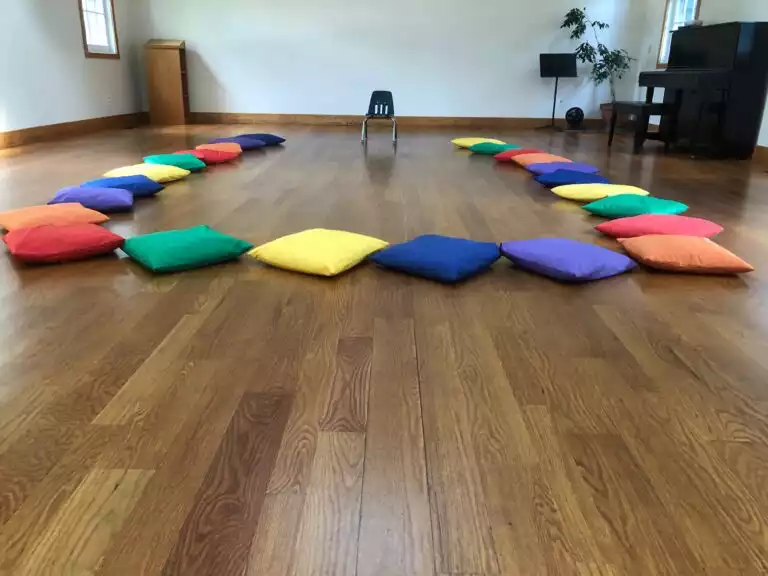
A few years ago, I was regularly attending dance fitness classes a couple times a week. Each session I would arrive, change into my dancing sneakers, and let the instructor take the lead as I chasséd and pliéd the hour away. Most often I would leave without giving any thought to what went into planning the class. Every once in a while, however, an instructor would say something–call out a specific muscle we were working on or name a combination dance step–that would lead to a moment of realization: instructing these classes requires a lot of study, practice, and preparation, which is not unlike what I do each week to prepare for storytime here at the library.
Like a dance fitness instructor endlessly learning new routines, I am constantly on the lookout for new books to share at storytime. At any given moment, I may have between five and thirty-five picture books on hold in order to assess them for use in a storytime. As I evaluate a book, a few of the questions I consider are: Is this book developmentally appropriate for my audience? Will it make a good read aloud? Are there connections I can make to an early literacy skill or to a theme? Does it represent a diverse author, illustrator or character? Are the illustrations compelling?
Once the books are carefully selected for a storytime, my plan gets rounded out with songs, rhymes, games, or other activities. Since I’ve been doing storytime for many years, I have a repertoire of my own favorite songs and rhymes, which I keep track of in computer files. Mixing in new songs, rhymes, and activities on a regular basis keeps things fresh, though. Like a dance fitness instructor who practices a new routine over and over until it is memorized, I practice a new storytime song in my car, while I’m doing dishes or yard work, or in front of my colleagues in the Youth Services office at the library. In addition to sharing new songs and books informally in our office, formal storytime sharing sessions for library staff are also scheduled a few times each year so that we may share tips, tricks, success stories, challenges, and favorite songs and books with each other.
Like a dance fitness instructor who knows the name of every muscle and how to work them, library staff who perform storytimes are trained in early literacy skills and how to share them in fun and engaging ways. Early literacy skills are the skills children must know before they can learn how to read. One or more of the six early literacy skills–print motivation, print awareness, letter knowledge, vocabulary, narrative skills and phonological awareness–are seamlessly folded into each storytime plan, and books and songs are often assessed by which early literacy skill(s) they support.
Best of all? Unlike a dance fitness class, there is no cost to attend a library storytime. The current storytime schedule can be found on our website. Outdoor Storytime has returned to the Princeton Shopping Center on Tuesday mornings at 10:30am and will continue through October. What’s more, many of our staff favorite storytime songs and rhymes can be viewed on demand via the library’s YouTube channel, with new songs and rhymes being added often. Interested in creating your own storytime? Check out our Storytime At Home resource guide, where we share tips, hints, and favorite books. A few weeks ago the library celebrated National Library Week with the slogan “there’s more to the story.” Those of us who do storytime at the library would like everyone to know that “there’s more to the storytime” as well.
Photo by Richard Payette on Unsplash.
